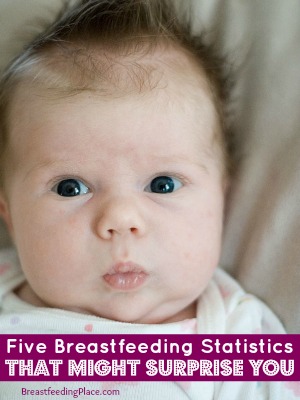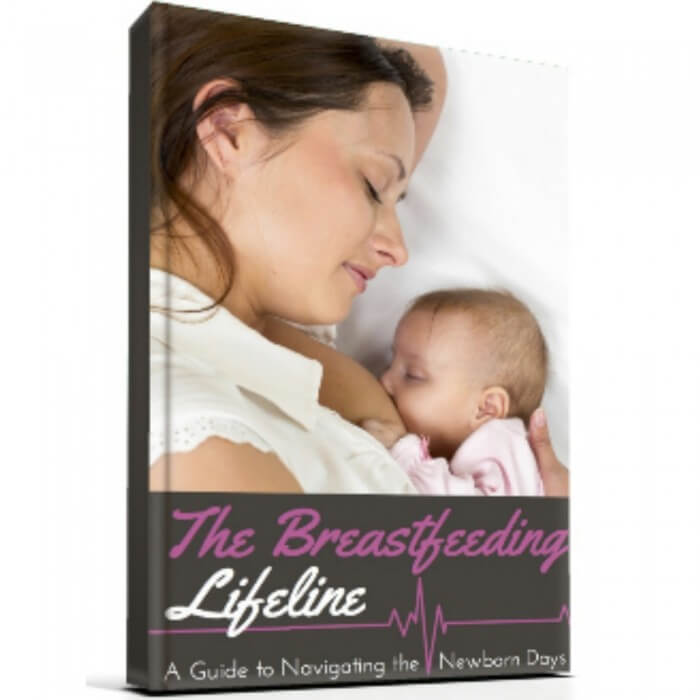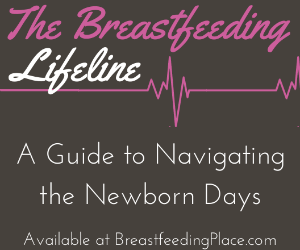 Most will not argue that breast milk is best for a new baby and that it is the most natural way of feeding your baby. We all hear about the benefits of breastfeeding and how it is not only good for baby, but for mom, too. But has it always been this way? Was breastfeeding always looked at as the better choice? Is it the natural thing to do around the world? What exactly are the benefits of breastfeeding for both mom and baby? Even after breastfeeding two kids and writing for this website for nearly a year, I am still learning new things about breastfeeding every day. So I thought I’d share with you some new things I’ve recently learned about breastfeeding. Here are five breastfeeding statistics that might surprise you.
Most will not argue that breast milk is best for a new baby and that it is the most natural way of feeding your baby. We all hear about the benefits of breastfeeding and how it is not only good for baby, but for mom, too. But has it always been this way? Was breastfeeding always looked at as the better choice? Is it the natural thing to do around the world? What exactly are the benefits of breastfeeding for both mom and baby? Even after breastfeeding two kids and writing for this website for nearly a year, I am still learning new things about breastfeeding every day. So I thought I’d share with you some new things I’ve recently learned about breastfeeding. Here are five breastfeeding statistics that might surprise you.
5 Little Known Breastfeeding Statistics
- Breastfeeding declined significantly in the 1950s and 1960s. Many considered breastfeeding to be something only the low class or uneducated people did. It was thought to be disgusting. If you couldn’t afford infant formula you were considered poor and old-fashioned. Many doctors even discouraged it.
- The amount of babies breastfed at birth was 77% in 2013, but only about 27% of babies were still breastfed at one year of age.
- The worldwide average length of breastfeeding before weaning is 4.2 years old! In many countries it is completely normal to breastfeed toddlers and even preschoolers.
- We all know breast is best, but did you know that breastfed babies have six times a greater chance of surviving the early months of infancy than a baby who is not breastfed? Exclusively breastfed babies are 14 times less likely to die in the first 6 months of life than a non-breastfed baby.
- Studies show that for every 12 months of breastfeeding the mother’s chance of getting breast cancer decreased by 4.3%, compared to women who did not breastfeed. The risk also went down by 3.4% for each child the mother breastfed.
Some of these breastfeeding statistics were quite surprising to me, most in a good way. It’s good to know that not only does experience prove to me that breast milk is best for my babies, but the research and statistics also show the benefits of breast milk to my babies as well as myself.
Did any of these breastfeeding statistics surprise you? Which one did you find most surprising?
For more information on these statistics check out these references:
- http://en.wikipedia.org/wiki/History_and_culture_of_breastfeeding
- http://www.cdc.gov/breastfeeding/pdf/2013breastfeedingreportcard.pdf
- http://www.breastfeeding-magazine.com/extended-breastfeeding.html
- http://www.unicef.org/nutrition/index_24824.html
- http://www.cancer.org/cancer/news/expertvoices/post/2013/05/07/can-breastfeeding-lower-breast-cancer-risk.aspx






I would like to know where you found the statistics for the worldwide average length of breastfeeding before weaning. I have searched for that information online, but have not been able to find any official stats.